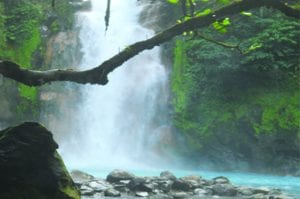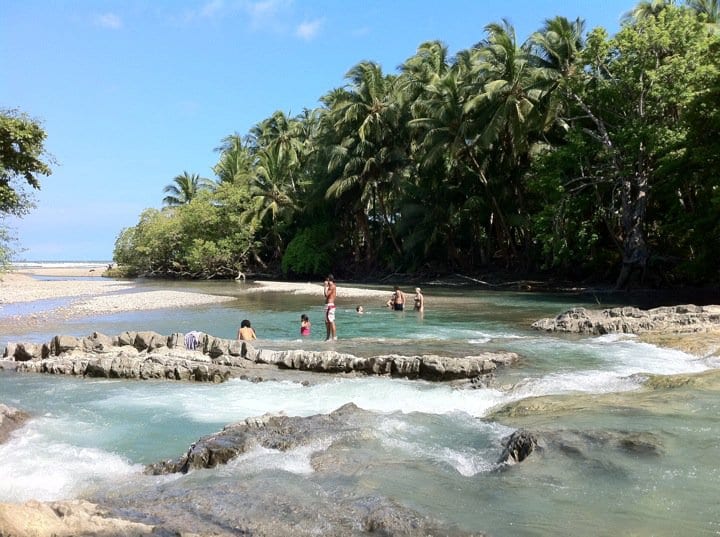Deep in the heart of Central America lies a country rich in culture, sun-kissed beaches, diverse landscapes, and the need for ESL teachers.
As the status quo in the world continues to increase the need for speaking English, ESL teachers are given an ever-growing list of location options to choose from, and this seaside oasis is quickly growing in the ranks of best places to teach, as far as lifestyle goes.
While monetary compensation cannot be considered competitive by any means, the experience of teaching in Costa Rica is what keeps teachers coming and expats staying.
Whether you are seeking lush rainforests, a never-ending supply of tropical fruit, the opportunity to practice a new language yourself, or weekends filled with salsa dancing, Costa Rica should definitely make your final cut when thinking about where to teach English abroad.
How to Teach English in Costa Rica?
Lucky for many, Costa Rica is one of the country’s that does not (usually) require a Bachelor’s degree in order to get a job teaching English. However, most companies will ask for some type of TEFL or TESOL certification.
Even if you find one that does not, having one will always be a huge benefit for you, as it gives you a bit more leverage when negotiating salary. Couple this with the fact that teaching in Costa Rica is becoming much more popular.
As such, the job market has become more competitive, and it’s easy to see how having a qualification will put you ahead of the rest. Plus, you are unlikely to receive training for your job teaching non-native speakers, so having some training of your own before will undoubtedly make your job easier in the long run.
Although work visas are technically required to legally teach in the country, many employers will hire you without one and pay you under the table. Get involved in this at your own risk.
Other employers may hire you after you’ve entered the country on a tourist visa and assist you with getting a work permit.
However, the process can be lengthy, so expect a few complications and stresses along this route. Obtaining a temporary residence permit will take three to six months and will be nearly impossible for you to get without the help of our Spanish-speaking employer.
Be prepared.
One last tip for teachers heading to the land of rainforest and sand, although the expression, “Life’s a beach” is certainly characteristic of everyday life in coastal regions throughout the country, this idea doesn’t apply to your interview process in Costa Rica.
Employers will not appreciate the beach bum look, regardless of how laid back the general population of the country is. Clean yourself up and dress nicely because appearance matters here.
–Teaching Jobs in Costa Rica and How to Find Them-
In summary, Costa Rica is a great place to teach, provided that you don’t have to loom debt to pay off in another country. Students in this country are reportedly relaxed, friendly, and won’t cause you too much of a headache behavior-wise- this is always appreciated in a classroom setting.
The country is known for its hospitality and vibrancy, making it a great place to call home for a while. While in most countries ESL opportunities are centered in the capital and major cities, this is not necessarily true in Costa Rica.
Jobs are available at schools and language institutes throughout the country and only require a little exploration by you in order to be found. San Jose, the capital, certainly boasts incredible opportunities, especially to teach private lessons on the side to businessmen and women, but people in search of a more serene (and clean) setting will not be low on options either.
Most employers will not hire you from overseas, except the few that are associated with various recruitment agencies. However, many are quite keen to hire you on the spot if you walk into their office and make a great first impression.
Remember what I said before appearance is important, but so is personality…and timing. The school year beings at the end of January and goes through until early December.
Accordingly, the best time to look for a job is at the beginning of the school year and midseason during July.
Unfortunately for those who need things to be planned in advance, Costa Rican employers usually hire teachers last minute, after they’ve assessed how many students are enrolled for the upcoming term.
However, if you’re only after jobs teaching adults, you’ll be able to find work year-round. Post your own ads or use word-of-mouth for assistance in this area.
As I said before, Costa Rica is not the most lucrative option in the ESL world. Teachers typically make anywhere from $600 to $1000 per month, with average contracts requiring around 25 hours per week.
This is more than enough to live comfortably in Costa Rica while still having opportunities to explore here and in (cheaper) surrounding countries.
However, it is not a sound option for those aiming to pay off student loans or save buckets of cash.
 The Lifestyle of An English Teacher in Costa Rica
The Lifestyle of An English Teacher in Costa Rica
Of course, the main reason that anyone moves to this (or any) tropical paradise is to enjoy life at a slower pace.
After your week of teaching, it’s super easy to hop on a bus to the beach or rainforest- whichever tickles your fancy at that moment- and go on an adventurous expedition.
Equally tempting is the option to sit back in the sunshine and sip on a cold drink. After all, Costa Rica’s main mantra is, “Pura Vida”, or “life is good”.
Almost everyone that goes to Costa Rica will enjoy some type of walking or hiking, whether it be through grasslands, rainforest, or across sandy beaches.
The Guanacaste (or ‘Gold Coast’) region is one of the nation’s premier destinations for such experiences, with secluded beaches and exciting volcanic activity.
Specifically, the Rincón de la Vieja National Park is a top destination on the Gold Coast, as it is home to both beautiful waterfalls and hot springs.
Canopy tours also allow visitors to get an up-close-and-personal experience with the vast wildlife present in the region.
Water plays a great role in Costa Rica’s beauty and the lifestyle practiced there, so do as the locals do and get out and enjoy it.
The more than twenty rivers across the country provide great opportunities for laid-back kayaking, while those with experience can enjoy guides sea kayaking tours. Innumerable beaches provide a great place to relax in the sand or catch the swell on a surfboard, as well.
In addition to its attention to environmentalism and conservation, Costa Rica is known around the world for the nesting of sea turtles.
Read: Best Places To Teach Abroad For Career Advancement Opportunities
This can be observed year-round in a variety of places, but be sure to do a simple internet search to find out the correct timing for the spot you’re heading to.
If you have some time off, you can even arrange to volunteer with one of the many conservation groups that work to preserve these magnificent creatures.



 The Lifestyle of An English Teacher in Costa Rica
The Lifestyle of An English Teacher in Costa Rica

